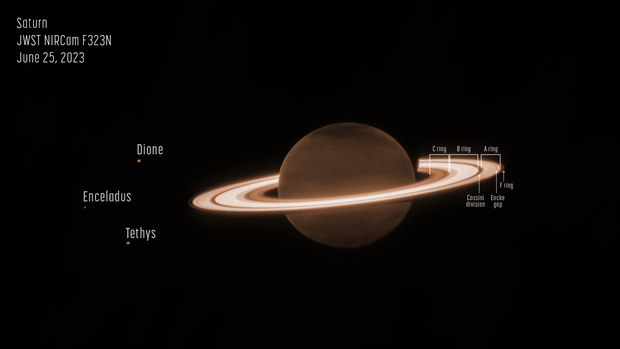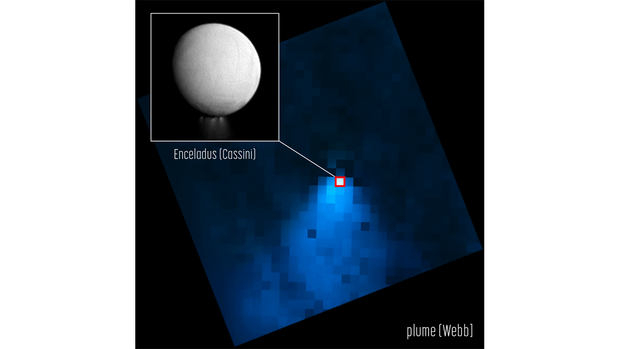The James Webb Space Telescope has captured a breathtaking image of Saturn and its magnificent rings. This is the first time the telescope has observed the planet in near-infrared, revealing a mesmerizing glow.
NASA recently released a color-corrected image of Saturn that showcases several of its rings and some of its orbiting moons. The rendering portrays Saturn as dark and shaded while its rings shine brightly.
This image of Saturn is particularly striking due to the stark contrast between the planet and its shimmering rings. NASA explains that the infrared wavelength used by the Webb telescope for this image is absorbed by methane gas on Saturn. While the planet appears dark, its icy rings remain bright.
This astounding view of Saturn comes as scientists continue to explore the planet and its system. Recently, the Webb telescope detected a massive plume of water vapor emanating from Enceladus, one of Saturn’s moons known for its icy composition. This discovery is particularly intriguing as it may provide insights into the broader Saturnian water system and the potential for extraterrestrial life on Enceladus.
In the latest image of Saturn, taken as part of the Webb telescope’s guaranteed time observation program, Enceladus can be seen alongside the moons Dione and Tethys. This image also serves as a testing ground for the telescope’s ability to detect faint moons and provide a comprehensive understanding of Saturn’s system.
Deeper exposures captured by the Webb telescope will enable researchers to investigate Saturn’s fainter and thinner rings, composed of rocky and icy fragments. Some of these fragments are smaller than a grain of sand, while others are as large as mountains on Earth.
Denial of responsibility! VigourTimes is an automatic aggregator of Global media. In each content, the hyperlink to the primary source is specified. All trademarks belong to their rightful owners, and all materials to their authors. For any complaint, please reach us at – [email protected]. We will take necessary action within 24 hours.




